The concept of a 'smart home' has evolved far beyond a futuristic novelty; it's now a practical, accessible reality that enhances daily life. From automating mundane tasks to providing robust security and significant energy savings, integrating technology into our living spaces is one of the most impactful upgrades a homeowner can make. But where do you begin? The sheer volume of gadgets, platforms, and systems can be overwhelming, making it difficult to find a clear starting point. This guide cuts through the noise.
We've compiled 10 essential home smart ideas, breaking down each category into actionable insights, real-world examples, and tiered options for every budget. Forget generic advice; we're focusing on practical implementation. You’ll learn how smart thermostats can intelligently adapt to your schedule, how integrated security systems provide peace of mind, and how simple lighting automation can transform your home's ambiance and efficiency. Whether you're a tech enthusiast ready for a full-scale overhaul or a curious newcomer looking to start with a single, impactful change, this roundup provides a clear roadmap.
Each idea is presented as a building block for a more connected and responsive living environment. As you begin to explore the possibilities for a smart future home, you might also discover innovative approaches in specific areas, such as these smart ideas for bathroom remodeling, which demonstrate how targeted upgrades can yield significant benefits. Our goal is to empower you with the knowledge to create a safer, more efficient, and more convenient home for you and your family, one smart device at a time. Let's dive into the systems that will define the next generation of modern living.
1. Smart Lighting Systems
Smart lighting is one of the most accessible and impactful home smart ideas, offering far more than just remote on/off control. These intelligent systems allow you to meticulously manage every aspect of your home's illumination, including brightness, color, and temperature, directly from a smartphone app or through voice assistants like Amazon Alexa and Google Assistant. They can automate lighting schedules based on time of day, occupancy, or even your natural circadian rhythms, enhancing both ambiance and energy efficiency.

This technology moves beyond simple convenience, transforming a basic utility into a dynamic part of your home's environment. By connecting bulbs, switches, and fixtures to your Wi-Fi network, you unlock a new level of control and customization.
Why It's a Top Smart Idea
Smart lighting is a foundational upgrade because it improves daily life in multiple ways. It enhances security by simulating occupancy when you're away, saves money by optimizing energy use, and boosts well-being by allowing you to tailor light to specific tasks or moods. For example, you can set bright, cool-toned light for your home office during work hours and automatically switch to a warm, dim glow in the evening to help you relax.
Example Implementations
- Philips Hue: The industry standard, known for its extensive ecosystem of bulbs, light strips, and fixtures that integrate seamlessly. A popular setup involves creating "scenes" for different activities like "Movie Night" or "Focus."
- LIFX: These bulbs are praised for their vibrant colors and simple, hub-free setup, making them an excellent entry point for beginners.
- Nanoleaf: Famous for its modular, wall-mounted light panels, Nanoleaf allows you to create dynamic, artistic light installations that sync with music or your screen.
Actionable Tips for Getting Started
- Start Small: Begin with a single room, like the living room or bedroom, to learn the system's capabilities before investing in a whole-house solution.
- Create Routines: Use scheduling to your advantage. Set lights to gently brighten in the morning as a natural alarm clock or to turn off automatically when you leave the house.
- Integrate for Power: Connect your lighting system to other smart devices. For instance, link it to your smart doorbell so that porch lights turn on automatically when motion is detected.
2. Smart Thermostats
Smart thermostats are a cornerstone of any list of essential home smart ideas, evolving temperature control from a manual task to an automated, intelligent process. These devices connect to your Wi-Fi and learn your household's patterns, automatically adjusting heating and cooling to optimize comfort while dramatically reducing energy waste. Using advanced sensors and machine learning, they can detect when you're home or away, adapting the climate to your needs without you ever touching a dial.
This technology provides unparalleled control over your home's HVAC system, which is often the largest contributor to your utility bills. By moving beyond simple scheduling to predictive, algorithm-driven adjustments, a smart thermostat becomes a powerful tool for both savings and convenience.
Why It's a Top Smart Idea
A smart thermostat is a high-impact upgrade because it delivers tangible financial returns and enhances daily comfort. It eliminates the wasteful practice of heating or cooling an empty house and provides detailed energy reports that help you identify further saving opportunities. The ability to control your home's temperature from anywhere in the world adds a layer of convenience, allowing you to warm up the house just before you arrive home on a cold day. For more on the specific financial benefits, explore these insights on smart thermostat energy savings.
Example Implementations
- Google Nest Learning Thermostat: A pioneer in the market, this device learns your schedule and programs itself, building a personalized temperature profile within a week.
- Ecobee SmartThermostat: Known for its inclusion of remote room sensors, Ecobee ensures balanced temperatures across your entire home, not just near the thermostat.
- Honeywell Home T9: This model also excels with multi-room sensing, allowing you to prioritize comfort in specific rooms like a nursery or home office.
Actionable Tips for Getting Started
- Check HVAC Compatibility: Before purchasing, confirm that your chosen thermostat is compatible with your home's heating and cooling system.
- Leverage Geofencing: Activate the geofencing feature, which uses your phone's location to automatically switch the system to an energy-saving "Away" mode when you leave.
- Review Energy Reports: Make a habit of checking the monthly energy usage reports provided by the app to track your savings and discover patterns in your HVAC usage.
- Set Smart Schedules: Create schedules for sleeping hours, programming the temperature to be a few degrees cooler or warmer to save energy while you're comfortable in bed.
3. Smart Security Systems
Smart security systems are one of the most essential home smart ideas, evolving far beyond traditional alarms. These comprehensive ecosystems integrate devices like surveillance cameras, door and window sensors, smart locks, and motion detectors into a single, centralized platform. This allows for real-time monitoring, instant alerts sent to your smartphone, and remote access to your home's security from anywhere in the world, giving you complete peace of mind.
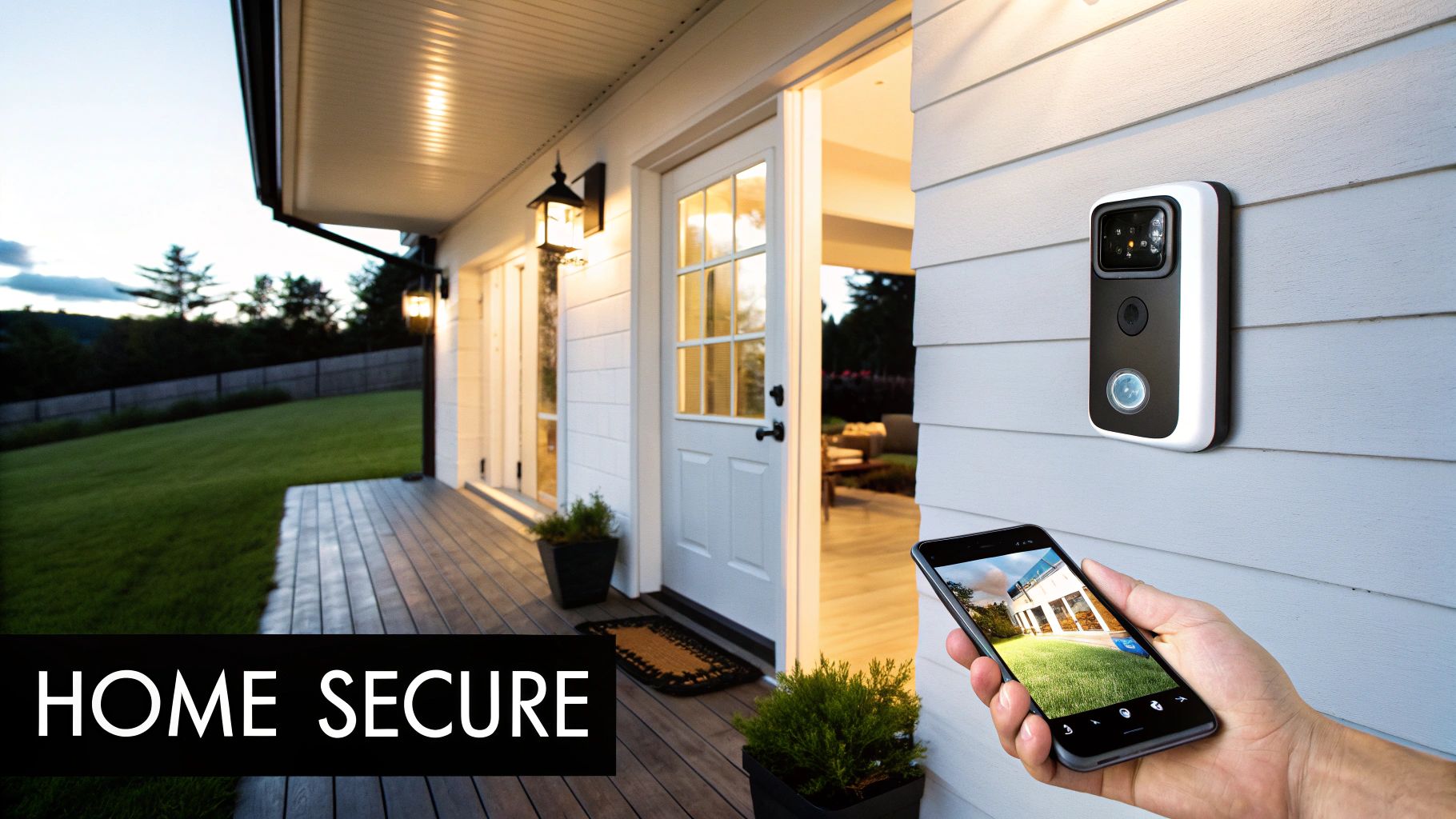
By connecting these various components to your home network, you create a powerful, proactive security web. Instead of just reacting to a break-in, these systems help you deter threats before they happen, check in on your property, and maintain a constant, watchful eye over what matters most.
Why It's a Top Smart Idea
A smart security system is a cornerstone of a modern smart home because it provides tangible safety and control. It offers proactive protection by letting you see and speak to visitors via a smart doorbell, receive alerts if a window is opened unexpectedly, or remotely grant access to a family member with a smart lock. The ability to monitor your home in real-time and review recorded footage adds a layer of security that traditional systems can't match.
Example Implementations
- Ring: Popularized the video doorbell and now offers a complete DIY ecosystem with cameras, alarms, and sensors that are easy to install and manage.
- SimpliSafe: A leader in the DIY security space, offering affordable, customizable, and contract-free monitoring plans with a wide range of compatible sensors.
- Vivint Smart Home: A premium, professionally installed system known for its seamless integration of security, cameras, and other smart home devices into one cohesive platform.
- Apple HomeKit Secure Video: A privacy-first solution that uses your existing Apple devices for secure, end-to-end encrypted video storage and intelligent alerts.
Actionable Tips for Getting Started
- Strategically Place Cameras: Position cameras to cover all main entry points, such as the front door, back door, and ground-floor windows.
- Strengthen Your Passwords: Use strong, unique passwords for your security system accounts and enable two-factor authentication for an extra layer of protection.
- Perform Regular Maintenance: Routinely check that your system alerts are working and keep all device firmware updated to protect against vulnerabilities.
- Combine Storage Options: Use both cloud and local storage (like an SD card) for your video footage to ensure you have a backup if your internet connection fails.
4. Smart Door Locks
Smart door locks are another of the most transformative home smart ideas, fundamentally changing how you secure and access your home. These electronic mechanisms replace or augment traditional key-based deadbolts, offering keyless entry via smartphone apps, PIN codes, or even biometrics. They connect to your home network, allowing you to lock and unlock your door remotely, grant temporary access to guests, and receive real-time notifications about who is coming and going.
This technology elevates home security from a passive system to an active, intelligent one. By integrating with your smart home ecosystem, a smart lock becomes the central gatekeeper, providing both unparalleled convenience and a robust audit trail of your home's entry points.
Why It's a Top Smart Idea
A smart lock is a cornerstone of modern home security and convenience. It eliminates the panic of forgotten keys and the security risk of lost or copied ones. You can create unique, temporary access codes for service providers or guests and revoke them instantly. This level of access control is invaluable for managing a busy household, monitoring children's arrivals, or securing a rental property, all while enhancing overall safety.
Example Implementations
- August Smart Lock: A popular choice for its easy installation, as it retrofits over your existing interior deadbolt, allowing you to keep your original keys.
- Level Lock: Known for its completely invisible design, this lock is installed inside your door, preserving the aesthetic of your existing hardware.
- Schlage Encode: A highly-rated, durable option with a built-in keypad and Wi-Fi, offering multiple entry methods without needing an extra bridge or hub.
- Yale Assure Lock: This premium lock offers a sleek touchscreen keypad and integrates with numerous smart home systems, including Apple HomeKit and Z-Wave.
Actionable Tips for Getting Started
- Check Compatibility First: Ensure the lock you choose is compatible with your door type (thickness, backset) and your preferred smart home platform (Alexa, Google Home, HomeKit).
- Enable Two-Factor Authentication: Secure the mobile app that controls your lock with two-factor authentication (2FA) to prevent unauthorized access if your phone is compromised.
- Manage Access Codes: Create unique, temporary codes for visitors, dog walkers, or contractors instead of giving out a master code. Delete them once they are no longer needed.
- Monitor Battery Life: Smart locks are battery-powered. Pay attention to low-battery warnings from the app and replace them proactively to avoid being locked out.
5. Smart Climate Control & Air Quality Systems
Beyond simple temperature adjustments, smart climate and air quality systems offer one of the most vital home smart ideas for well-being: actively managing your indoor environment. These advanced solutions go beyond thermostats to monitor and control temperature, humidity, and airborne pollutants like dust, allergens, and VOCs. By integrating air purifiers, humidifiers, and ventilation with smart sensors, you can create a healthy, comfortable, and automated home atmosphere.
This technology connects disparate devices into a cohesive ecosystem that reacts to real-time conditions. When a monitor detects high CO2 levels, it can trigger a smart ventilation fan; when it senses low humidity, it can activate a humidifier, ensuring optimal living conditions without manual intervention.
Why It's a Top Smart Idea
A smart climate and air quality system is a powerful upgrade because it directly impacts your family's health and comfort. It provides peace of mind by continuously tracking invisible threats and automatically taking corrective action. This is especially beneficial for those with allergies, asthma, or other respiratory conditions. Furthermore, by optimizing HVAC performance and ventilation, these systems can contribute to energy efficiency, preventing unnecessary heating, cooling, or air purification cycles.
Example Implementations
- Dyson Pure Hot+Cool: An all-in-one device that combines a HEPA air purifier with a fan and heater, automatically sensing and reporting air quality levels to an app.
- Awair Element: A popular standalone monitor that tracks five key air quality metrics (temperature, humidity, CO2, chemicals, and PM2.5) and can trigger other smart devices via IFTTT integrations.
- IQAir HealthPro Plus: A premium, medical-grade air purification system that provides best-in-class filtration for allergens, viruses, and pollutants, ideal for creating a clean-air sanctuary.
- Carrier Infinity with PureAir: A whole-home HVAC solution that integrates advanced air purification directly into your central heating and cooling system for comprehensive coverage.
Actionable Tips for Getting Started
- Monitor First: Start with a dedicated air quality monitor like the Awair Element to understand your home's specific environmental challenges before investing in purifiers or ventilators.
- Automate Alerts: Set up notifications on your smartphone to alert you when air quality drops below a certain threshold, so you know exactly when to take action.
- Integrate with Your Thermostat: Connect your air quality system to your smart thermostat (like an Ecobee or Nest) to coordinate ventilation with heating and cooling for a fully integrated climate response.
6. Smart Appliances & Kitchen Systems
Smart appliances represent one of the most transformative home smart ideas, turning the kitchen from a manual workspace into an intelligent, connected hub. These systems include everything from refrigerators that track inventory to ovens that can be preheated from your office. By connecting to your Wi-Fi, they offer remote control, performance insights, and automation that streamline meal preparation, grocery shopping, and energy management.
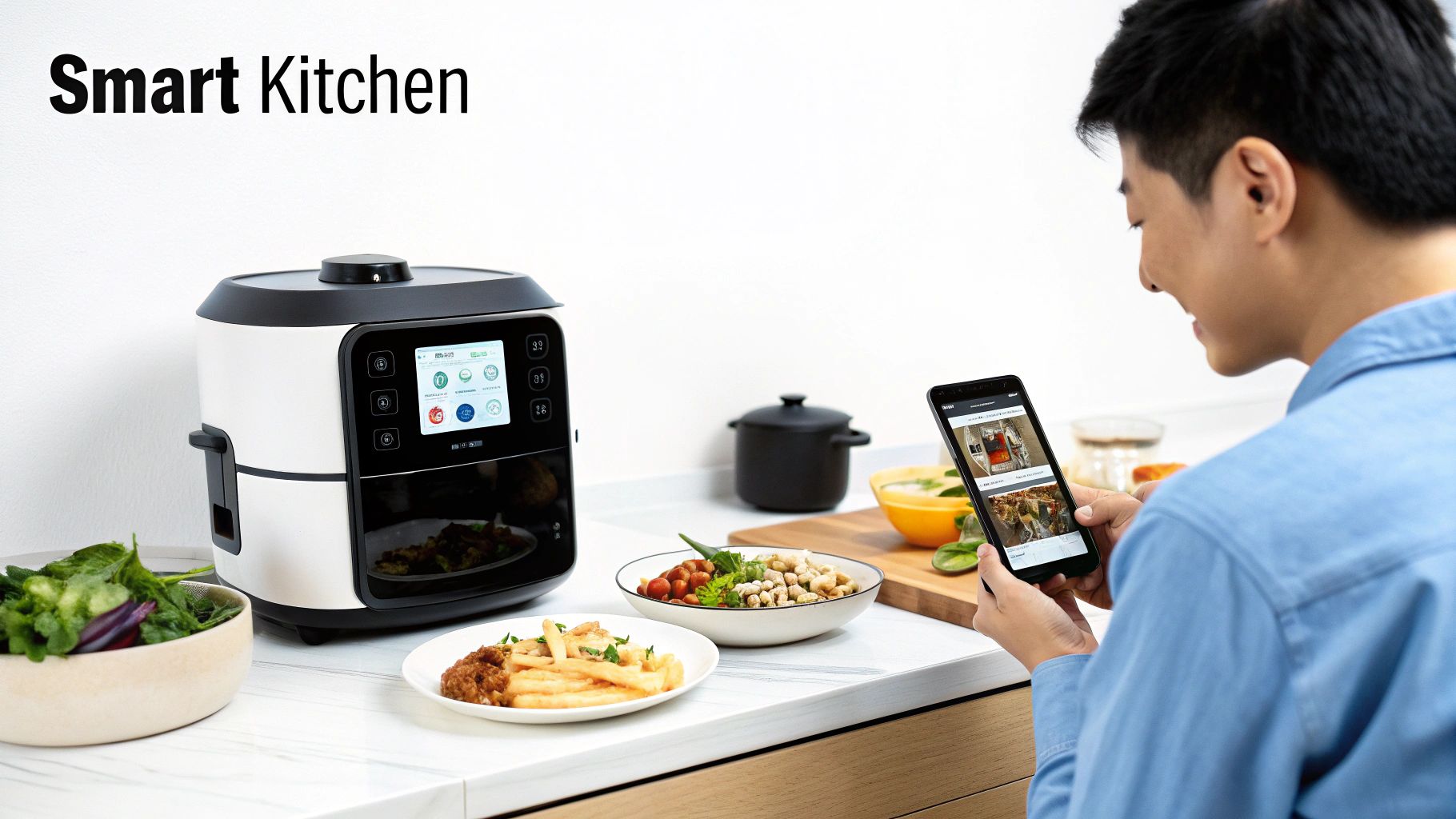
This technology integrates the core of your home with your digital life, allowing appliances to communicate with each other and with you via smartphone apps or voice assistants. The result is a more efficient, convenient, and even creative cooking experience.
Why It's a Top Smart Idea
A smart kitchen is a major upgrade because it saves significant time and reduces mental clutter. Imagine your refrigerator adding milk to your shopping list when you run low, or your oven automatically setting the correct temperature for a recipe you selected. These devices provide valuable data on energy consumption, help minimize food waste, and can even guide you through complex recipes. For those looking to integrate smart technology into their cooking spaces, discover some of the 5 Must-Have Smart Appliances for Upgrading Your Kitchen to see what's possible.
Example Implementations
- Samsung Family Hub Refrigerator: This appliance features an interactive touchscreen for meal planning, managing calendars, and even streaming music, acting as a central command center.
- LG InstaView Oven: Known for its remote preheating and cooking features, some models include live video monitoring so you can check on your food without opening the door.
- Instant Pot Smart Multi-Cooker: An affordable entry point, this device allows you to control cooking cycles and access thousands of recipes directly from its companion app.
Actionable Tips for Getting Started
- Start with One Appliance: Begin by upgrading a high-usage appliance like your refrigerator or oven to understand its benefits before committing to a full kitchen overhaul.
- Stick to One Ecosystem: For seamless integration, try to purchase appliances from the same manufacturer, as their systems (like GE's SmartHQ) are designed to work together.
- Use Energy Monitoring: Take advantage of energy-monitoring features to identify peak usage times and adjust your habits to save on utility bills.
- Keep Firmware Updated: Regularly update your appliances' software to ensure you have the latest features and critical security patches.
7. Smart Lighting & Occupancy Automation
Taking smart lighting a step further, Smart Lighting & Occupancy Automation integrates intelligent illumination with presence detection. This is one of the most practical home smart ideas because it ensures lights are only on when a room is actually in use. By pairing smart bulbs or switches with motion and occupancy sensors, your home can automatically manage its own lighting, dramatically reducing energy waste and adding a layer of hands-free convenience.
This automated system goes beyond simple motion activation. True occupancy sensors can detect subtle movements or even the lack thereof, keeping lights on while you're sitting still and turning them off shortly after you leave. It transforms your home's lighting from a manual task into an intuitive, background process.
Why It's a Top Smart Idea
This approach is a top-tier upgrade because it maximizes both energy efficiency and convenience. You never have to worry about lights being left on in empty rooms, which directly translates to lower electricity bills. It's particularly useful in high-traffic, transient spaces like hallways, bathrooms, and laundry rooms, where lights are frequently turned on and off. For families with children, it completely eliminates the need for constant "turn off the lights" reminders.
Example Implementations
- Lutron Caseta with Pico Sensors: A professional-grade system known for its reliability and responsiveness, ideal for whole-home automation. The sensors can be placed anywhere for precise room control.
- Philips Hue Motion Sensor: An affordable and easy-to-install add-on for an existing Hue ecosystem. It can be configured to trigger different light scenes based on the time of day.
- GE Enbrighten Reveal: This DIY-friendly option combines motion-sensing capabilities directly into smart switches, offering a clean, integrated solution without needing separate sensor units. For a deeper look into standalone sensor bulbs, you can learn more about how motion-sensing light bulbs work.
Actionable Tips for Getting Started
- Target High-Traffic Areas: Begin by installing sensors in hallways, laundry rooms, closets, and bathrooms for the most immediate impact on convenience and energy savings.
- Adjust Sensor Settings: Fine-tune the sensitivity and time-out duration. A high-traffic hallway needs a short delay, while a bathroom may require a longer one to prevent lights from turning off prematurely.
- Use Override Controls: Ensure your system allows for manual overrides. This is crucial for rooms like a home office or bedroom where you might need continuous lighting regardless of detected motion.
8. Smart Home Hubs & Central Control Systems
A smart home hub is the central nervous system of your connected home, one of the most powerful home smart ideas for achieving true automation. These devices act as a universal translator, allowing different smart products from various brands, which often use different communication protocols (like Wi-Fi, Zigbee, and Z-Wave), to talk to each other. This centralized command center unifies control, enabling you to manage everything from lights to locks through a single app or voice assistant.
By bridging these communication gaps, a hub transforms a collection of individual gadgets into a cohesive, intelligent ecosystem. It unlocks the ability to create complex automation routines that a single device's app couldn't handle, such as a "Goodbye" routine that locks the doors, adjusts the thermostat, and turns off all lights with one command.
Why It's a Top Smart Idea
A smart hub is a foundational investment for anyone serious about home automation. It simplifies management, eliminates the need to juggle multiple apps, and provides the processing power for sophisticated routines that make your home truly responsive. Hubs that support local processing can also increase reliability and speed, as commands are executed within your home network without relying on an internet connection.
Example Implementations
- Samsung SmartThings Hub: A versatile and popular choice known for its broad compatibility with thousands of devices across multiple protocols like Zigbee and Z-Wave.
- Hubitat Elevation: This hub is favored by enthusiasts because it prioritizes local processing, ensuring automations run quickly and privately without depending on the cloud.
- Amazon Echo (4th Gen): More than just a smart speaker, it includes a built-in Zigbee hub, making it a great starting point for controlling compatible lights, plugs, and sensors directly with Alexa.
- Apple HomePod mini: Acts as a HomeKit hub, using the Thread protocol to create a reliable and responsive mesh network for compatible accessories.
Actionable Tips for Getting Started
- Prioritize Compatibility: Before buying a hub, list your current and planned smart devices to ensure the hub you choose supports their communication protocols.
- Embrace Local Control: Whenever possible, choose a hub that offers local processing for critical automations, like security systems, to ensure they work even if your internet goes down.
- Group Devices Logically: Organize your devices into rooms or zones (e.g., "Downstairs Lights," "Bedroom") within the hub's app. This makes creating and managing automation rules much simpler.
- Test Routines: When creating a new automation workflow, test it during off-peak hours to ensure it works as expected without causing disruptions.
9. Smart Water Management & Leak Detection
Smart water management is one of the most practical and protective home smart ideas, offering a powerful defense against costly water damage and unnecessary waste. These systems use sensors and intelligent valves to monitor your home's entire plumbing network, detecting everything from slow drips to catastrophic pipe bursts in real time. When an issue is identified, the system can send an instant alert to your smartphone and, in many cases, automatically shut off the main water supply to prevent damage.
This technology transforms a passive utility into an actively managed resource. By connecting a smart valve to your main water line and placing sensors in high-risk areas, you gain unprecedented oversight and control over your home's water usage and plumbing health.
Why It's a Top Smart Idea
A smart water management system is a crucial investment because it provides peace of mind and financial protection. A single significant leak can cause thousands of dollars in damage to floors, walls, and personal belongings. Early detection and automated shut-off capabilities can mitigate or entirely prevent this outcome. Furthermore, by tracking daily water consumption, these systems help you identify inefficiencies, encouraging conservation and lowering your utility bills.
Example Implementations
- Flo by Moen: A popular all-in-one device that learns your home's water habits and can automatically shut off the water if it detects an abnormality.
- Phyn Smart Water Shutoff: This system uses high-definition pressure wave analysis to detect leaks anywhere in your plumbing system from a single point of installation.
- Rachio Smart Sprinkler Controller: Focused on outdoor water management, Rachio optimizes irrigation schedules based on weather forecasts, soil type, and plant needs to conserve water.
- Eve Aqua Smart Water Controller: An excellent choice for Apple HomeKit users, this device allows for automated and remote control of garden hoses and sprinkler systems.
Actionable Tips for Getting Started
- Start with the Source: Install a whole-home monitor on your main water valve for the most comprehensive protection against major leaks.
- Target High-Risk Zones: Place individual wireless sensors under sinks, behind toilets, and near appliances like washing machines and water heaters. You can find comprehensive reviews to identify the best smart water leak detectors for these areas.
- Set Smart Alerts: Configure your system's app to set realistic water usage thresholds. This helps minimize false alarms while ensuring you are notified of genuine issues.
- Review Usage Reports: Check your monthly water reports to identify trends, spot potential hidden leaks, and understand your household's consumption patterns.
10. Smart Energy Management & Solar Integration
Taking energy efficiency to the next level, smart energy management represents one of the most comprehensive home smart ideas available. This approach goes beyond basic smart plugs by integrating solar panels, battery storage, and intelligent monitoring systems to create a self-sufficient home energy ecosystem. These systems optimize your energy consumption, store excess solar power for later use, and can even provide off-grid capabilities during power outages.
By combining generation, storage, and intelligent distribution, this technology transforms your home from a passive energy consumer into an active participant in the energy grid. You gain unprecedented control over how you produce, store, and use electricity.
Why It's a Top Smart Idea
Smart energy management offers a powerful combination of financial savings, energy independence, and environmental benefits. It allows you to maximize your investment in renewable energy by storing solar power generated during the day to use at night, significantly reducing or even eliminating your reliance on the utility grid. In the event of an outage, a connected battery system can keep your essential appliances running, providing invaluable security and peace of mind.
Example Implementations
- Tesla Powerwall with Sunrun: This popular pairing combines Tesla's sleek battery storage with Sunrun's solar panel installation, creating a fully integrated system managed through a single, intuitive app.
- Enphase Energy IQ System: Known for its microinverter technology, Enphase optimizes power generation from each individual solar panel and pairs seamlessly with its own IQ Battery storage solution for maximum efficiency.
- Sense Energy Monitor: A device that installs in your electrical panel to provide real-time, circuit-level insights into your home's energy use, helping you identify waste and track solar production with incredible detail.
Actionable Tips for Getting Started
- Calculate Payback Period: Before investing, work with an installer to calculate the estimated payback period based on your energy usage, local utility rates, and available incentives.
- Research Incentives: Look for federal tax credits, state rebates, and local utility programs that can significantly reduce the upfront cost of a solar and battery storage system.
- Use Storage Strategically: Configure your battery to discharge during your utility's peak rate hours, maximizing savings by avoiding the most expensive electricity.
Top 10 Smart Home Ideas — Feature Comparison
| Item | Implementation Complexity 🔄 | Resource Requirements ⚡ | Expected Outcomes 📊 / Quality ⭐ | Ideal Use Cases 💡 | Key Advantages ⭐ |
|---|---|---|---|---|---|
| Smart Lighting Systems | 🔄 Medium — bulb/hub install, app setup | ⚡ Low–Medium — smart bulbs, optional hub, Wi‑Fi | Energy −15–20%; better ambiance & sleep; ⭐⭐⭐⭐ | Living rooms, bedrooms, security lighting | Energy savings, circadian control, convenience |
| Smart Thermostats | 🔄 Medium — HVAC wiring & learning period | ⚡ Medium — thermostat unit, Wi‑Fi, compatible HVAC | Heating/cooling −10–15%; improved comfort; ⭐⭐⭐⭐ | Whole‑home HVAC optimization, seasonal savings | Energy analytics, rebates, automated comfort |
| Smart Security Systems | 🔄 High — cameras, sensors, monitoring integration | ⚡ High — cameras, sensors, subscriptions, stable internet | Deterrent + instant alerts; evidence collection; ⭐⭐⭐⭐ | Home security, rentals, monitored properties | Real‑time monitoring, deterrence, insurance discounts |
| Smart Door Locks | 🔄 Low–Medium — retrofit or replace deadbolt | ⚡ Low — smart lock, batteries, app connectivity | Keyless access, access logs; moderate security boost; ⭐⭐⭐ | Rentals, guest access, delivery management | Remote access, temporary codes, audit trail |
| Smart Climate & Air Quality | 🔄 High — sensors + HVAC integration, pro install | ⚡ High — purifiers, sensors, filters, possible HVAC upgrades | Better IAQ, reduce allergens/mold; health gains; ⭐⭐⭐⭐ | Allergy/asthma households, multi‑zone homes | Real‑time IAQ, humidity control, health benefits |
| Smart Appliances & Kitchen Systems | 🔄 High — multiple device integration, complex setup | ⚡ Very High — connected fridge, oven, dishwasher, network | Time saved, less food waste, energy insights; ⭐⭐⭐ | Smart kitchens, busy families, tech enthusiasts | Automation, inventory/recipes, predictive maintenance |
| Smart Lighting & Occupancy Automation | 🔄 Medium–High — sensor placement & tuning | ⚡ Medium — motion/occupancy sensors, controllers | Lighting −20–30%; automatic control; ⭐⭐⭐⭐ | Hallways, offices, energy‑sensitive spaces | Maximized lighting efficiency, safety, scalability |
| Smart Home Hubs & Central Control | 🔄 Medium — pairing & automation programming | ⚡ Low–Medium — hub, possible local server | Unified control, reliable automations; ⭐⭐⭐⭐ | Homes with many devices, complex routines | Interoperability, local processing, reduced app clutter |
| Smart Water Management & Leak Detection | 🔄 Medium — sensors + shutoff integration | ⚡ Medium — sensors, valves, possible pro install | Prevents $5k–$25k damage; water −15–30%; ⭐⭐⭐⭐ | Older homes, seasonal freeze regions, vacation properties | Early leak detection, auto shut‑off, usage insights |
| Smart Energy Management & Solar Integration | 🔄 Very High — design, permitting, grid interconnect | ⚡ Very High — solar panels, batteries, inverters, monitoring | Electricity −10–40%; ROI 5–7 yrs with credits; ⭐⭐⭐⭐ | Solar adopters, EV owners, off‑grid ambitions | Bill reduction, backup power, carbon footprint reduction |
Your Smart Home Journey: Bringing It All Together
Embarking on the path to a smarter home is a journey of incremental improvements, not a single, monolithic project. As we've explored throughout this guide, the universe of home smart ideas is vast and varied, ranging from the immediate convenience of smart lighting systems to the long-term financial and environmental benefits of integrated solar energy management. The sheer number of options can feel overwhelming, but the true power of a smart home lies in its customizability.
The most successful smart homes are not those with the most gadgets, but those where technology is thoughtfully applied to solve real-world problems. The key is to start with a clear understanding of your personal "why." Are you a busy parent aiming to streamline morning routines with automated lighting and smart kitchen appliances? Or perhaps you're a frequent traveler seeking peace of mind through a robust smart security system and remote-access door locks.
From Blueprint to Reality: Your Actionable Next Steps
The journey from concept to a fully realized smart home begins with a single step. Rather than attempting a complete overhaul at once, focus on a strategy of targeted upgrades. This approach allows you to experience tangible benefits immediately, learn the nuances of your chosen ecosystem, and make more informed decisions for future expansions.
Here is a practical framework to guide your next moves:
- Identify Your Primary Goal: Review the ten core areas we covered. Pinpoint the one that addresses your most significant pain point or desire. Is it reducing your carbon footprint with a smart thermostat, or is it enhancing family safety with a comprehensive security network?
- Start Small and Scale Up: Choose a single "gateway" device within your chosen category. If energy efficiency is your goal, a smart thermostat is an excellent starting point. For convenience, a smart home hub like an Amazon Echo or Google Nest Hub can centralize control and introduce voice commands into your daily life.
- Prioritize Interoperability: Before purchasing, check for compatibility. Ensure new devices work with your existing technology or the ecosystem you plan to build. Look for standards like Matter, Zigbee, or Z-Wave, which are designed to help different brands communicate seamlessly.
- Create a Phased Rollout Plan: Map out your smart home evolution. For example, Phase One might be securing the perimeter with smart locks and cameras. Phase Two could involve optimizing energy with smart thermostats and lighting. Phase Three could focus on convenience with smart appliances and occupancy automation.
The True Value of an Intelligent Home
Mastering these home smart ideas is about more than just technological novelty. It’s about reclaiming your time, enhancing your family’s security, and creating a living environment that is more responsive, efficient, and attuned to your needs. A well-designed smart home can automate mundane tasks, providing you with more moments to focus on what truly matters.
From receiving an alert about a water leak while you're on vacation to having your home's climate and lighting adjust perfectly as you arrive, these systems work in the background to make life simpler and more secure. It’s a proactive approach to home management, transforming your house from a passive structure into an active partner in your daily life. By taking a thoughtful, incremental approach, you can build a cohesive ecosystem that not only adds convenience but also provides genuine peace of mind and long-term value.
Ready to turn these ideas into a personalized action plan? The Automated Home Guide offers in-depth product reviews, step-by-step setup tutorials, and expert comparisons to help you choose the right devices for your unique needs. Visit the Automated Home Guide to access the ultimate resource for building a smarter, more connected home.
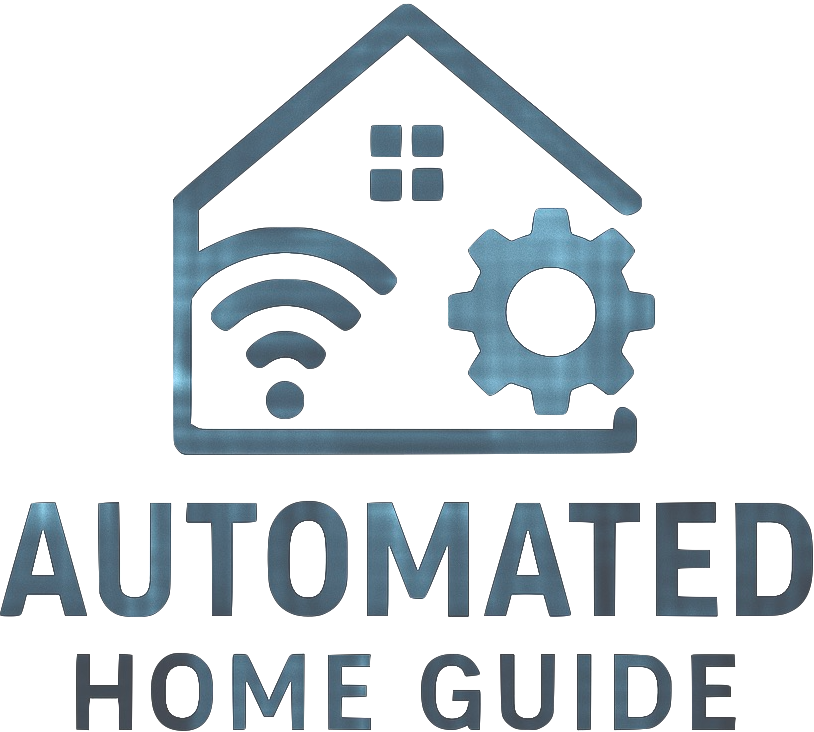
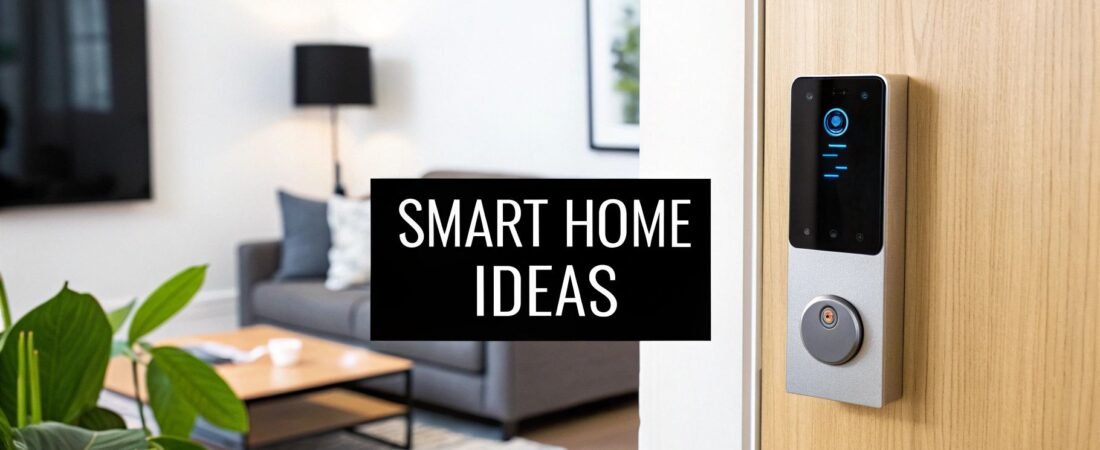



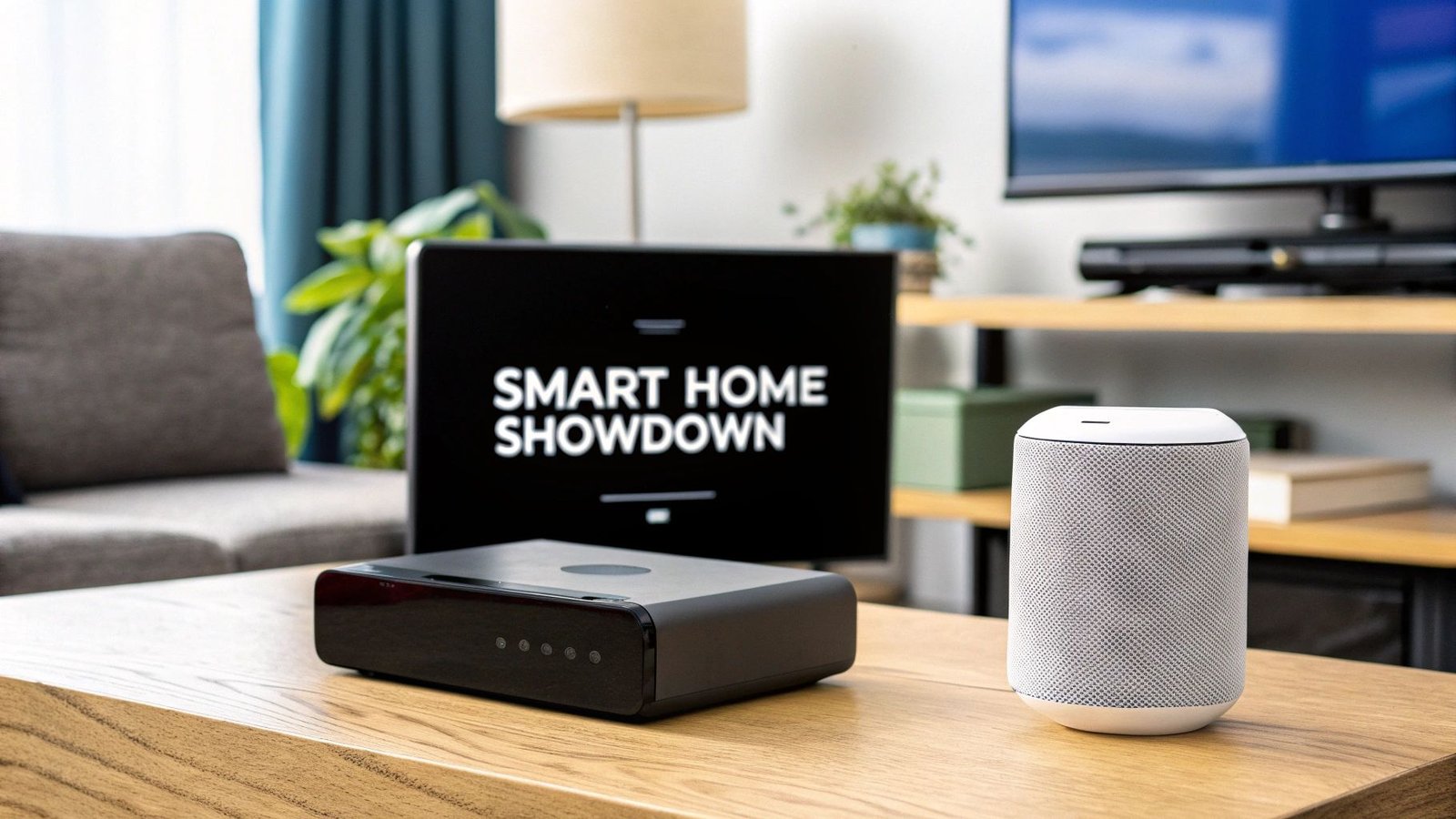



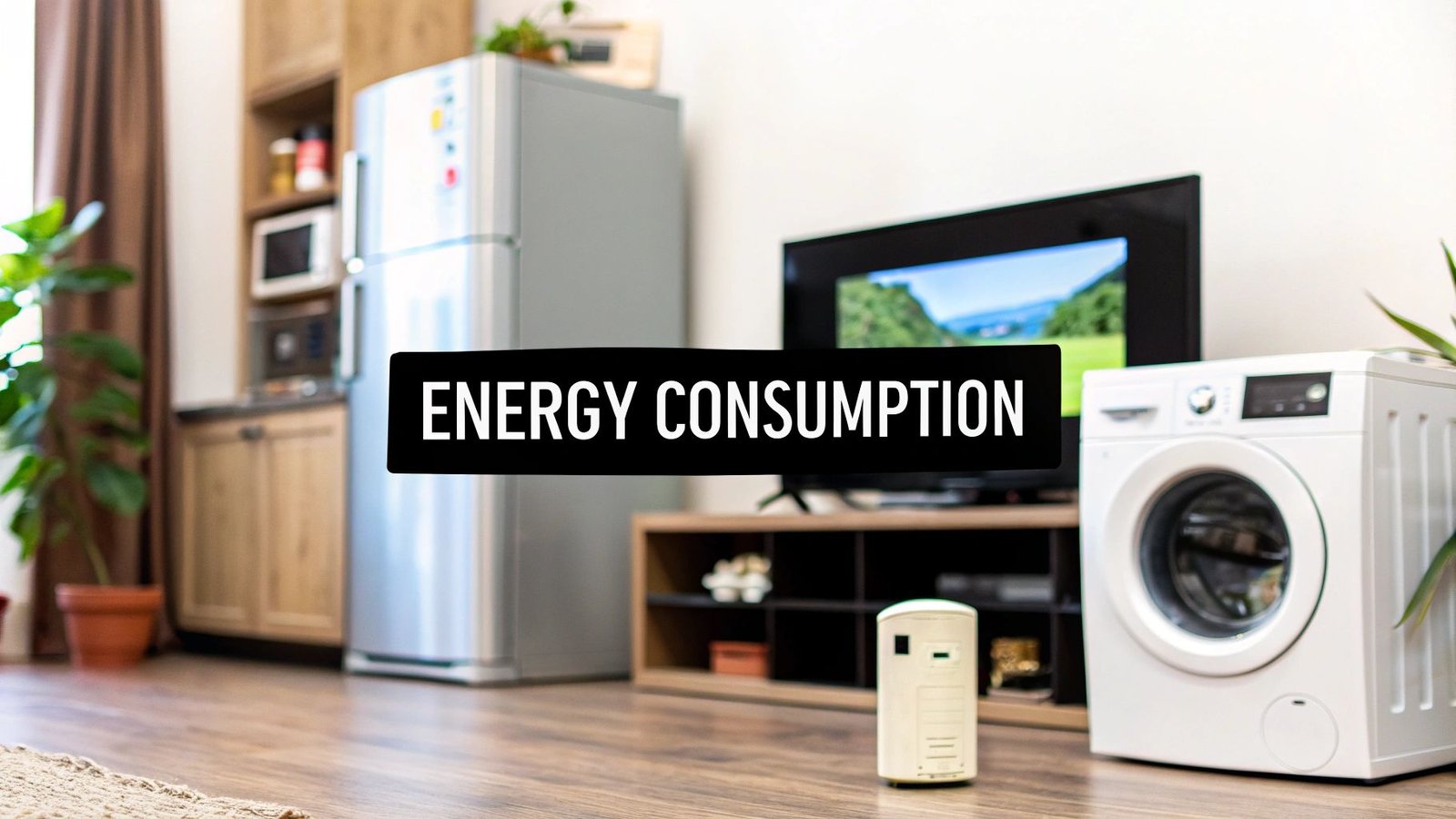
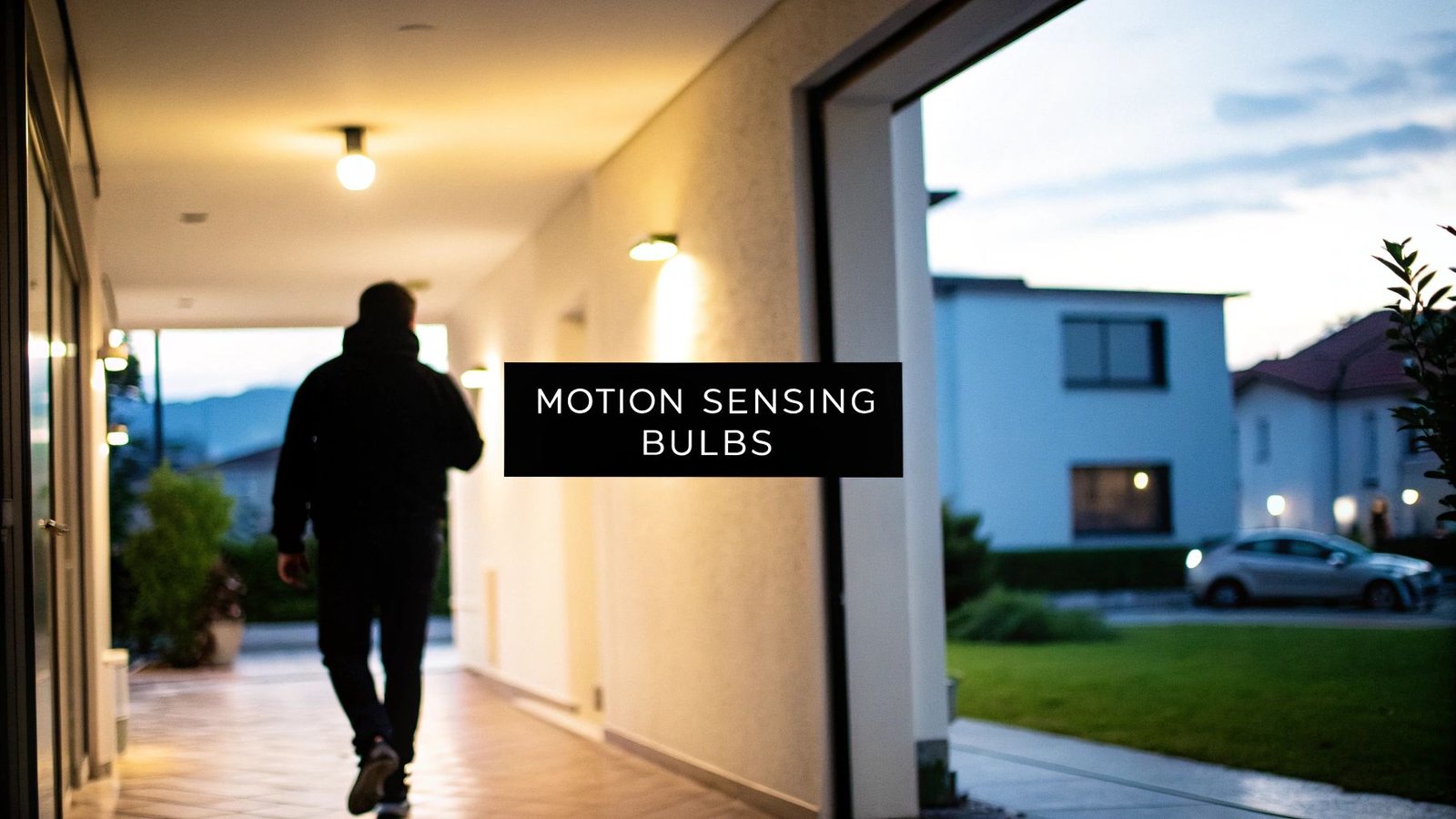
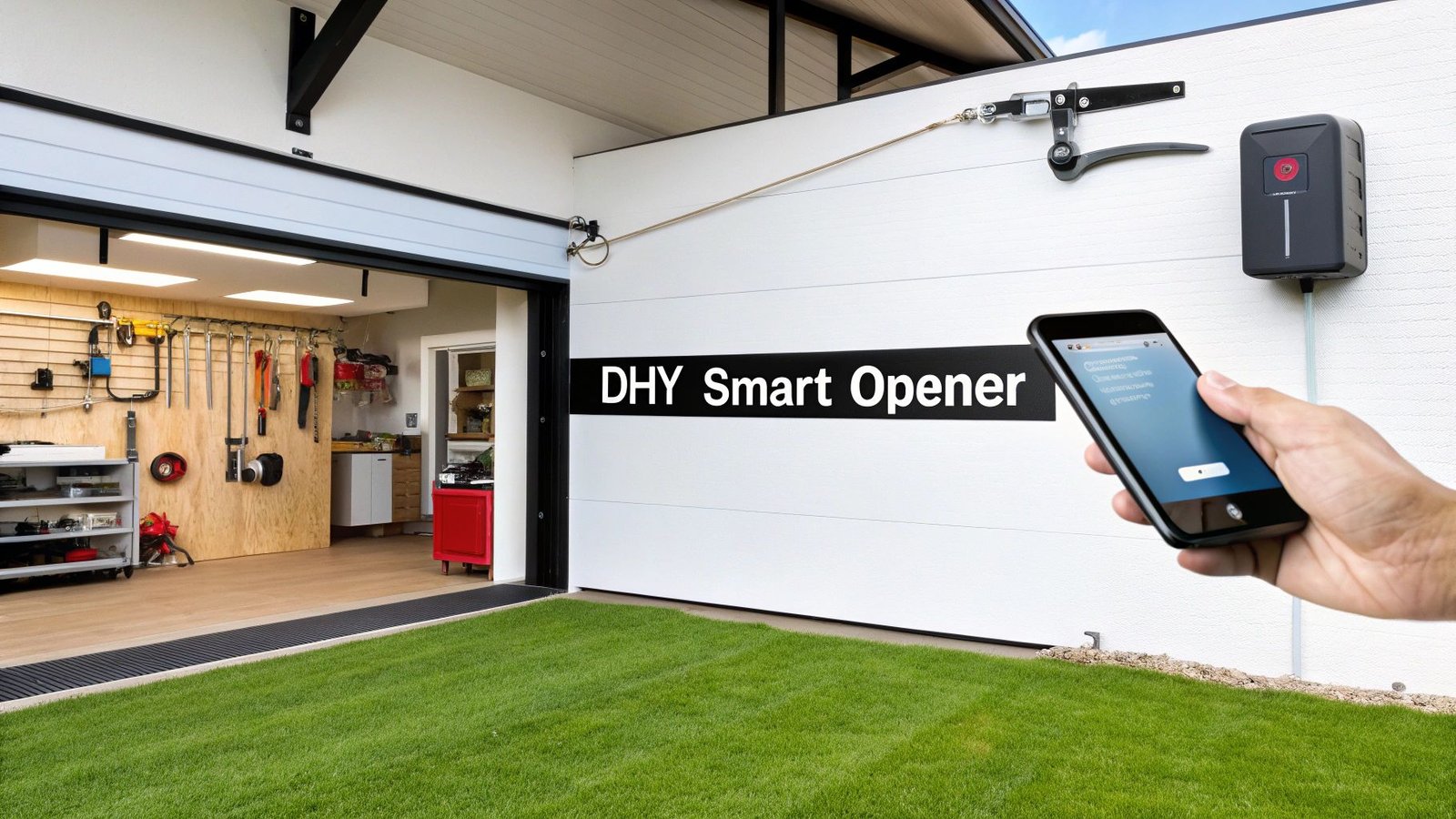
Leave a Reply